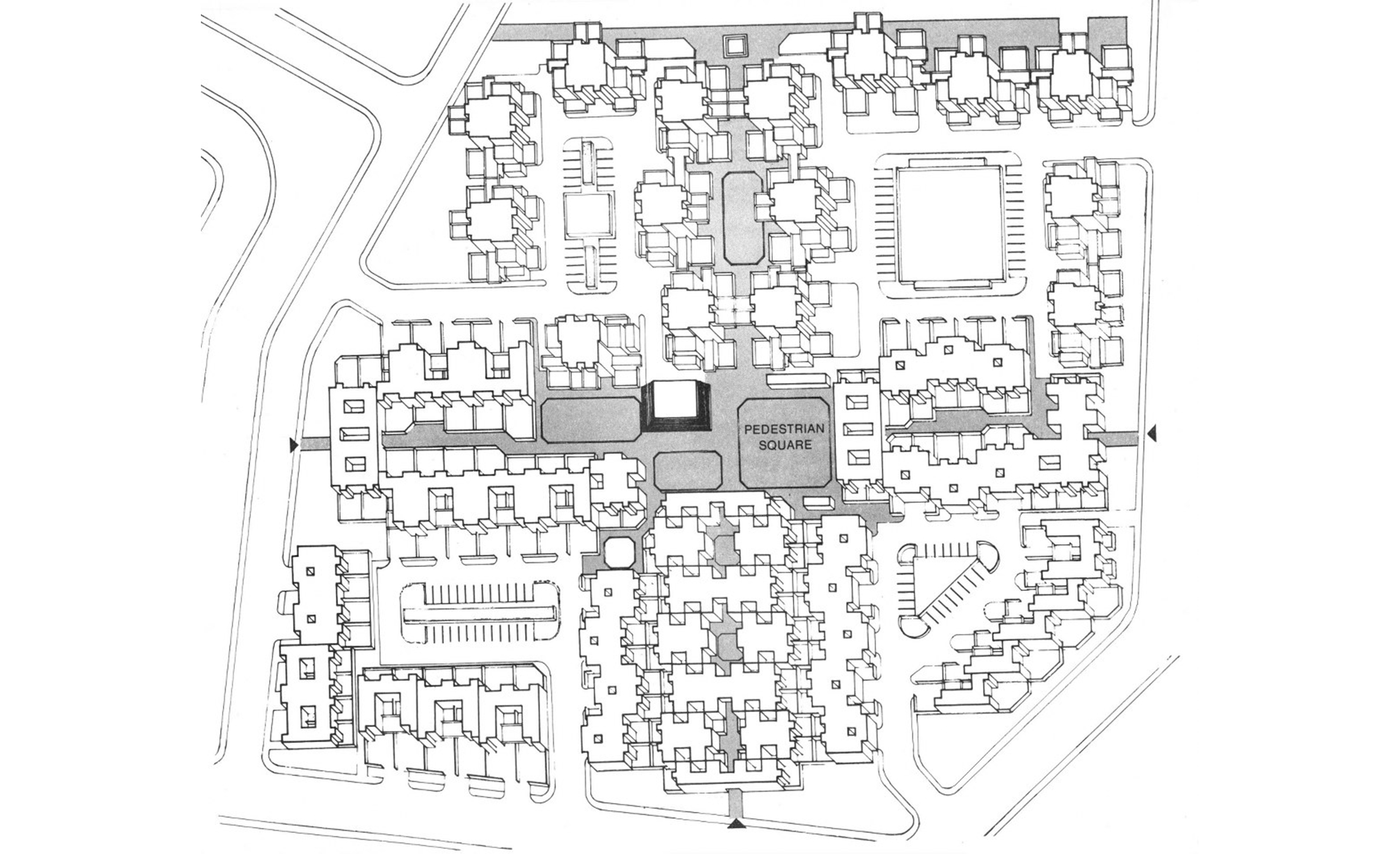Extract From Essays by Critics
“Rewal has tried to express a new sense of vocabulary that fuses urbanism and architecture. He has tried to define a grammar based on twentieth century technology that will achieve the richness, variety, climatic sensitivity, scale and geometrical discipline that he has perceived in great urban complexes of the past such as Jaisalmer and Jaipur. Tradition is approached for its underlying order, not for its superficial effects, and is rethought in terms that are right for the possibilities and limitations of the present social order Raj Rewals synthesis blends old and new, international and regional, but does not lapse into pasctiche.”
William J.R. Curtis
Translated from monograph on Raj Rewal published by Electa Moniteur, France, 1986
“Raj Rewal’s images are with their own points-of-reference, all-at-once traditional and urban. Predominantly structural Strung in “material ‘- sandstone, dholpur stone, concrete. Crisp and direct. On the face of it, there are no aesthetic convulsions. Spaces, frames seem to break into view with a calm suddenness. Then slowly, the tempo quickens. The placid structure acquires life, Columns, corridors, courts, frames contribute like impromptu prompts.”
Sarayu Ahuja
Indian Architect & Builder, October 1990
” The mass housing that Rewal built at Sheikh Sarai based on haveli typology and traditional patterns of urban space has been refined, purified and perfected into ideal ensembles of collective dwellings. Masterfully taking advantage of the irregularities of the site, the laboratories and the dwellings, with walkways, courtyards and terraces offer a harmonious physical entity for living and working. ”
Brian Brace Taylor
Monograph on Raj Rewal 1992 by Mimar Publications
” Each of Rewal’s Buildings communicates in clear terms the essence of its architecture. The process of defining the architectural expression, the rasa of the building, begins with an analysis of the building programme. The programme attains a preeminent position where its expression becomes synonymous with that of the very essence of the building. It is not conceived, however, simply in terms of its functional requirements but in the concrete exposition of its essence as defined by its rasa. ”
Abhimanyu Dalal
A+D, Jan-Feb 1995
” Particular attention has been paid to ways in which the building form can temper the unremitting harshness of the climate. On the external perimeter, the upper floors overhang to create deep shadows. Throughout, windows are deeply recessed to shield the interior from the sun glare and give the building an almost sculptural articulation. ”
Paul Joubert
Architectural review, May 1995
” What indeed can be more interesting than a contemporary building expressing a liveliness, a boldness and technical research whose real material is neither steel, nor stone nor concrete, but light and history. A secular light, which has been much worked on, but without being transformed into something sacred. ”
Giordano Tironi
Raj Rewal-Library for the Indian Parliament -2002
” In his library, Rewal has pulled off a remarkable feat: he has not only related the building to its immediate very difficult physical and historical context, but to deeper strains of Indian culture and history. And he has married these to modern technology and functional analysis. ”
Peter Davey
Architectural Review, October 2002













